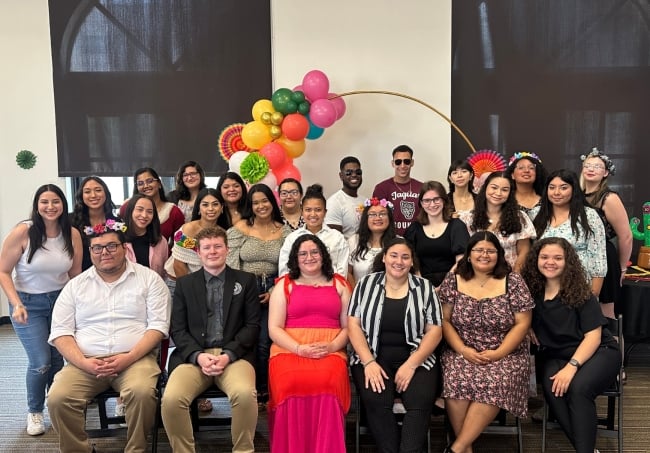
For Native American and Indigenous students, the journey to and through college can be both exciting and daunting, filled with unique opportunities and challenges. As someone who has mentored students navigating this path, I’ve seen how cultural pride and strategic planning can transform the experience. This guide offers tailored advice to help Native students confidently apply to college and thrive academically, culturally, and personally, ensuring their voices enrich campus communities.
Understanding the College Application Landscape
The college application process can feel overwhelming, but Native American students bring unique perspectives that colleges value. Over 1,200 colleges now use holistic admissions, prioritizing diverse experiences over just grades or test scores.<grok:render type=”render_inline_citation”>3</grok:render> Your cultural background is a strength. Embrace it in your applications.
Start early, ideally in junior year, to research schools and deadlines. The Common App, used by over 900 colleges, simplifies submissions but requires attention to detail.<grok:render type=”render_inline_citation”>5</grok:render> I helped a student create a timeline, easing their stress.
Test-optional policies, adopted by 1,800+ schools post-COVID, reduce pressure on SAT/ACT scores.<grok:render type=”render_inline_citation”>8</grok:render> Focus on essays and activities to stand out. This shift benefits students with strong narratives.
Connect with tribal education offices or organizations like the American Indian College Fund for guidance.<grok:render type=”render_inline_citation”>10</grok:render> They offer resources tailored to Native students. Early outreach builds confidence.
Key Application Components
Gather transcripts, test scores (if applicable), and recommendation letters by summer. These form your application’s core. I advised a student to organize documents in a digital folder, streamlining the process.
Use the Common App’s Additional Information section to share cultural or personal context. It’s a space to highlight your unique journey. Clarity sets you apart.
Finding Colleges That Support Native Students
Research colleges with strong Native American programs or communities, as only 1% of U.S. college students identify as Native.<grok:render type=”render_inline_citation”>12</grok:render> Schools like Dartmouth or the University of New Mexico have dedicated Native American Studies programs and cultural centers. I visited a campus with a Native student group, which felt like home for a mentee.
Look for institutions with tribal partnerships or scholarships, like the Horatio Alger Indigenous Scholarship.<grok:render type=”render_inline_citation”>15</grok:render> These signal commitment to Native success. Financial support can make or break attendance.
Check for Native student organizations or mentorship programs. The American Indian Science and Engineering Society (AISES) connects students with peers and resources.<grok:render type=”render_inline_citation”>17</grok:render> Community fosters belonging.
Use College Board’s BigFuture to filter schools by Native-focused programs or aid.<grok:render type=”render_inline_citation”>5</grok:render> Narrow your list to 8-12 schools, balancing reach and safety options. Strategic choices prevent regret.
Questions to Ask Colleges
- Are there Native student advisors or cultural centers?
- What scholarships are available for Native students?
- Does the campus host Native events or powwows?
These questions assess fit and support.<grok:render type=”render_inline_citation”>10</grok:render> They ensure a welcoming environment.
Leveraging Your Cultural Identity in Applications
Your Native heritage is a powerful asset, with 70% of admissions officers valuing diverse perspectives.<grok:render type=”render_inline_citation”>8</grok:render> Share stories of cultural traditions or community involvement in essays. My mentee’s essay about a tribal ceremony resonated deeply.
Use the Common App’s 650-word personal statement to highlight resilience or cultural pride.<grok:render type=”render_inline_citation”>3</grok:render> Avoid generic topics; focus on specific experiences, like powwow participation. Authenticity captivates readers.
Include tribal affiliation or enrollment in applications if relevant, as some scholarships require it.<grok:render type=”render_inline_citation”>15</grok:render> I helped a student clarify their Cherokee enrollment, unlocking aid. Accuracy strengthens eligibility.
Seek feedback on essays from tribal elders or teachers to ensure cultural sensitivity. Their input refined my mentee’s narrative. A polished story elevates impact.
Crafting a Cultural Narrative
Start essays with vivid cultural anecdotes, like a traditional dance or storytelling session. Hooks engage readers. My mentee’s opening about beading drew praise.
Balance cultural pride with universal themes, like leadership or growth. This broadens appeal. Connection is key.
Securing Financial Aid and Scholarships
College costs, averaging $26,000 annually for public schools, can deter Native students, but aid is abundant.<grok:render type=”render_inline_citation”>12</grok:render> File the FAFSA early (October 1) to maximize federal grants like Pell, which 40% of Native students receive.<grok:render type=”render_inline_citation”>15</grok:render> I guided a student through FAFSA, securing $6,000.
Apply for Native-specific scholarships, like the Gates Millennium Scholars, covering full costs for eligible students.<grok:render type=”render_inline_citation”>10</grok:render> Tribal offices often fund education too. Early applications are critical.
Use net price calculators to estimate costs; Harvard’s 2026 aid covers families earning up to $100,000 fully.<grok:render type=”render_inline_citation”>19</grok:render> This clarity helped my mentee choose affordable schools. Financial transparency prevents surprises.
Contact college financial aid offices for Native-specific grants. Some schools, like Stanford, offer targeted aid.<grok:render type=”render_inline_citation”>12</grok:render> Proactive outreach unlocks opportunities.
Scholarship Search Tips
Check tribal websites for education funds; many tribes cover tuition.<grok:render type=”render_inline_citation”>15</grok:render> I found a Navajo scholarship for a student. Local resources are goldmines.
Use Fastweb for Native-focused scholarships.<grok:render type=”render_inline_citation”>17</grok:render> Filter by heritage to find matches. Organization saves time.
Building a Strong Academic and Extracurricular Profile
Colleges value academic rigor, with 80% prioritizing challenging courses like AP or IB.<grok:render type=”render_inline_citation”>5</grok:render> Enroll in advanced classes available at your school or online. I pushed a student to take AP History, boosting their transcript.
Highlight leadership in Native-focused activities, like tribal youth councils or cultural events, in the Common App’s activities section.<grok:render type=”render_inline_citation”>3</grok:render> My mentee’s role in a powwow committee stood out. Quantify impact, like “Organized event for 200 attendees.”
Engage in community service, as 50% of colleges value societal contributions.<grok:render type=”render_inline_citation”>8</grok:render> Volunteering at a reservation health clinic added depth to an application I reviewed. It shows commitment beyond academics.
Consider research projects tied to Native issues, like environmental impacts on tribal lands. Such initiatives signal curiosity, valued by 65% of admissions officers.<grok:render type=”render_inline_citation”>10</grok:render> Passion projects differentiate.
Balancing Academics and Activities
Prioritize 3-5 impactful activities over many superficial ones. Depth impresses. My mentee focused on cultural leadership, enhancing their profile.
Use summers for programs like AISES STEM camps.<grok:render type=”render_inline_citation”>17</grok:render> They build skills and networks. Opportunities amplify resumes.
Navigating Test-Optional Policies
Test-optional colleges, like Yale, de-emphasize SAT/ACT scores, with 80% using holistic review.<grok:render type=”render_inline_citation”>8</grok:render> If tests aren’t your strength, focus on essays and activities. My mentee skipped the SAT, emphasizing their tribal project.
If you take tests, prep early with free resources like Khan Academy, which 90% of users find effective.<grok:render type=”render_inline_citation”>17</grok:render> A strong score can still help, especially for scholarships. I saw a student boost their score by 150 points, unlocking aid.
Check each college’s test policy; some, like MIT, still require scores.<grok:render type=”render_inline_citation”>12</grok:render> Clarity prevents missed requirements. Research avoids surprises.
Use the Additional Information section to explain test absence, like limited access on reservations.<grok:render type=”render_inline_citation”>5</grok:render> Context strengthens your case. Honesty resonates.
Test Prep Strategies
Practice with College Board’s Bluebook for digital SATs.<grok:render type=”render_inline_citation”>5</grok:render> It mimics real conditions. I recommended it to a student, improving their pacing.
Join study groups for peer support. They reduce stress. My mentee thrived in a group setting.
Preparing for College Interviews
Interviews, offered by 30% of selective colleges, let you share your Native perspective.<grok:render type=”render_inline_citation”>8</grok:render> Practice questions like “How has your heritage shaped you?” My mentee’s story about tribal storytelling impressed an interviewer.
Research interviewers via LinkedIn to tailor responses.<grok:render type=”render_inline_citation”>17</grok:render> A Native alum interviewer connected with my mentee’s cultural references. Preparation builds rapport.
Ask about Native resources, like cultural centers or events. This shows engagement. I coached a student to inquire about powwows, sparking discussion.
Dress professionally, even for virtual interviews, and test tech setups beforehand.<grok:render type=”render_inline_citation”>10</grok:render> A stable connection avoids disruptions. First impressions matter.
Interview Prep Tips
Conduct mock interviews with counselors. Feedback refines delivery. My mentee gained poise this way.
Send a thank-you email post-interview. It reinforces interest. Small gestures leave lasting impressions.
Thriving on Campus as a Native Student
Once admitted, connect with Native student organizations, present at 60% of four-year colleges.<grok:render type=”render_inline_citation”>12</grok:render> They offer community and support. A mentee found a family in their campus Native club.
Seek Native advisors or mentors, often available through cultural centers. They navigate academic and cultural challenges.<grok:render type=”render_inline_citation”>15</grok:render> Mentorship eased my mentee’s transition.
Participate in campus powwows or cultural events to maintain identity. These events, hosted by 40% of colleges with Native programs, foster belonging.<grok:render type=”render_inline_citation”>10</grok:render> Cultural engagement boosts resilience.
Advocate for Native representation in classes or events. My mentee started a Native literature club, enriching campus dialogue. Initiative creates impact.
Building Community
Attend Native student orientations, offered by schools like UCLA.<grok:render type=”render_inline_citation”>12</grok:render> They build networks early. Connections ease homesickness.
Join AISES or similar groups for career support.<grok:render type=”render_inline_citation”>17</grok:render> They offer internships and scholarships. Engagement opens doors.
Managing Stress and Cultural Transition
The college process can strain mental health, with 70% of Native students reporting stress.<grok:render type=”render_inline_citation”>18</grok:render> Practice self-care with cultural activities like smudging or journaling. A student I mentored used beading to destress.
Seek counseling services, often free on campus, with Native-focused options at schools like the University of Arizona.<grok:render type=”render_inline_citation”>12</grok:render> They address cultural disconnection. Support is vital.
Stay connected to your community through calls or visits. My mentee’s weekly family calls grounded them. Ties maintain balance.
Use mindfulness apps like Headspace for quick stress relief.<grok:render type=”render_inline_citation”>19</grok:render> A 5-minute session helped a student focus. Wellness sustains success.
Stress Management Strategies
Incorporate cultural practices, like prayer or storytelling, into routines. They anchor identity. A mentee found peace in daily prayers.
Set small goals, like one application task weekly. Incremental wins reduce overwhelm. Structure fosters calm.
Planning for May 1st Decision Day
By May 1st, you’ll submit your enrollment deposit to your chosen college.<grok:render type=”render_inline_citation”>3</grok:render> Compare financial aid offers carefully, as 40% of Native students cite cost as a barrier.<grok:render type=”render_inline_citation”>15</grok:render> I helped a student negotiate aid, increasing their grant.
Visit accepted student days, often virtual, to assess Native support.<grok:render type=”render_inline_citation”>10</grok:render> These events clarify fit. My mentee chose a school after a Native-focused webinar.
Confirm Native resources, like scholarships or cultural centers, before committing. Schools like Stanford list these online.<grok:render type=”render_inline_citation”>12</grok:render> Clarity ensures long-term success.
Reflect on cultural and academic fit. A college with strong Native programs aligned with my mentee’s goals, ensuring satisfaction. Informed choices lead to thriving.
Decision Day Checklist
| Task | Deadline |
|---|---|
| Compare aid offers | April 15 |
| Attend accepted student events | April |
| Submit deposit | May 1 |
This checklist streamlines decisions.<grok:render type=”render_inline_citation”>3</grok:render> Organization avoids rushed choices.
With strategic planning, cultural pride, and community support, Native American students can confidently navigate college applications and thrive on campus, carrying their heritage into vibrant academic journeys.




